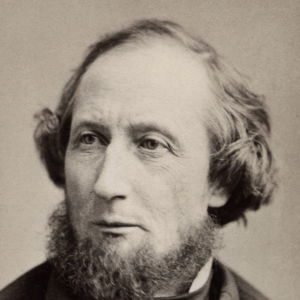On November 30, we celebrate the 200th birthday of Cyrus Field, whose mostly forgotten project succeeded in bringing us closer together. His cable across the Atlantic meant messages could arrive in minutes instead of days or weeks.
As a young man he started as a bookkeeper at a modest paper firm. He worked hard and achieved the position of a junior partner by the time the firm suffered bankruptcy during a downturn. Field then was able to buy the firm’s assets and turn its business around. A little later he did something wholly unexpected: he paid off all of the original, now-bankrupt, firm’s debts. Doing so revealed his character and later increased the willingness of investors to stick with him during hard times. Field’s paper business flourished, and he became a wealthy man.
But we do not celebrate Field for his character and his success in selling paper. We celebrate his birthday for what he did next. He became convinced that a telegraph cable could be laid across the Atlantic, and he made it his project to get that job done. John Steele Gordon tells the heroic story well in his “A Thread Across the Ocean.”
Before the cable, messages in bad weather could take weeks to cross the Atlantic in ships. The delay increased the costs of trade, slowed negotiations of governments, and separated friends and families.
Cyrus Field was the innovative entrepreneur who persuaded investors to fund the laying of a cable, first in the waters between mainland Canada and Newfoundland, and from there across the Atlantic. In 1855, the first try to reach Newfoundland failed when the cable broke — the fragile cable could not be laid from a sailing ship whose movements could not be well-controlled. When they laid the cable from a steamship in 1856, they succeeded, but at the cost of the remaining funds, including Field’s own $200,000 stake.
So Field found new investors willing to form the American Telegraph Company to tackle the boldest part of the project. He personally invested an additional $305,000, which almost exhausted his remaining wealth. Field was a project entrepreneur. His first project was to revive the paper firm. He took the profits from that project and invested them in his much more ambitious next project, to lay the cable across the Atlantic.
In the first try, in August 1857, after laying 400 of the 2,500 miles of cable, it broke. The cable-laying machine was not forgiving, and the main operator had briefly turned it over to someone less experienced. Before the next try, they resolved to improve the machine and better train the operators.
In that second try, in June 1858, an unusually strong and long storm almost sunk one of the ships, and turned out to have damaged the cable, so that when it was laid, it broke. The chairman and vice chairman were despondent and wanted to liquidate the firm. Cyrus Field persuaded the remaining directors to persevere.
Not much cable had been lost in the second try, so the ships were quickly repaired and resupplied. The third try began in July 1858. This time they succeeded. The success was confirmed when messages were sent between Queen Victoria and President James Buchanan on August 16, 1858. Triumphant fireworks were fired from the top of the City Hall of New York. Six white horses pulled the carriage transporting Cyrus Field and the mayor in a parade down Broadway.
But the first success was not a success for long. In an effort to speed up the signal, too much voltage burnt out the cable after only three weeks. Praise turned into ridicule.
A committee took a while to investigate and then the Civil War intervened.
Although his own finances were precarious, Field once again persevered in raising money, and finally in 1865 he used a bigger ship to lay a bigger and stronger cable. But the stronger cable still broke and they ran out of wire rope to retrieve it. In 1866 he returned with fresh cable and more rope. Finally he achieved a durable success.
Ridicule turned back into praise. Once again, on his 200th birthday, we too praise entrepreneur Cyrus Field for risking his wealth to achieve his great project of sending our words across an ocean.

